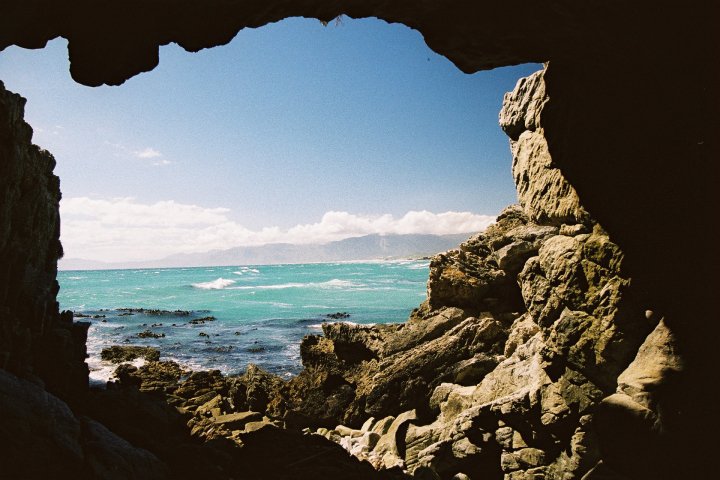Set your inner adventurer free and scout out a few hidden caves around the Cape.
Whether you are seeking a mythological creature that lurks within the depths of the dark or seeking to find rock paintings our ancestors left behind, plan a trip to these natural wonders.
We have found five must-visit caves in the Cape.
1. Klipgat Cave
Located just outside of De Kelders in Walker Bay Nature Reserve, Klipgat Cave is home to signs of some of the earliest modern humans and is millions of years old.
The remains in the cave are estimated to date back to between 65 000 and 85 000 years. Human remains as early as this have only been found in three South African sites and in the Middle East
Klipgat Cave is accessible to the public by walking down a few steps and climbing to the naturally-concealed spot. There are plans in the works to develop easier access to the cave to preserve any damage caused to it by climbers.
Not only is the cut out entrance breathtaking but the value of the cave to our history is crucial; Klipgat is regarded as one of the Western Cape’s most important cultural assets due to the history it holds.
Address: Gansbaai
2. Peers Cave
Named after Victor Peers, Peers Cave was excavated in 1927 to collect ancient evidence of Khoisan people who had lived in the area more than 10 000 years ago. The cave was declared a national monument in 1941 after a 11 000-year-old skull was found on site.
The cave looks out onto a view of Noordhoek and the Atlantic Ocean. Hikers and climbers can find the cave by following a steep 20-minute path starting from the parking lot at Silvermine Nature Reserve, just off Ou Kaapse Weg.
There is clear signage along the route pointing visitors in the direction of Peers Cave.
Address: Silvermine Rd, Fish Hoek
3. Stadsaal Caves
Enter a haven of ancient ‘bushman’ rock paintings at Stadsaal Caves.
In order to enter the caves, visitors must purchase a permit from the Algeria Forest Station, Dwarsrivier farm, Cederberg Oasis, or Mount Cedar.
A short drive past the Cederberg Cellars will direct you to the cave site.
Address: Cederberg
4. Tartarus Cave
Entering Tartarus Cave is not for those who dislike confined spaces – visitors must crawl underneath boulders to get into the cave, which has multiple small chambers.
It is advised to go in large groups when entering the cave. Visitors must be cautious as some paths are narrow and slippery.
Visitors can head to Tartatus Cave by driving towards 110 Boyes Drive and stopping at the Bailey’s Kloof sign were they can find a footpath. After a 30-minute walk up the path, the start of the Tartarus Cave will be visible.
Address: Muizenberg
5. Elands Bay Cave
Known as a Western Cape Heritage Site, Elands Bay Cave is a natural phenomenon covered in ‘bushman’ rock art, with tiny handprints and painted figures con the rocks.
The cave is a historically-important site in South Africa and faces towards Elands Bay, with an ideal entrance for taking photos.
Visiting the cave can be done by following a path located just past the crayfish factory.
Address: Elands Bay
Picture: Facebook/Klipgat Cave/ Crayfish lodge and Sea & Country Guest House






